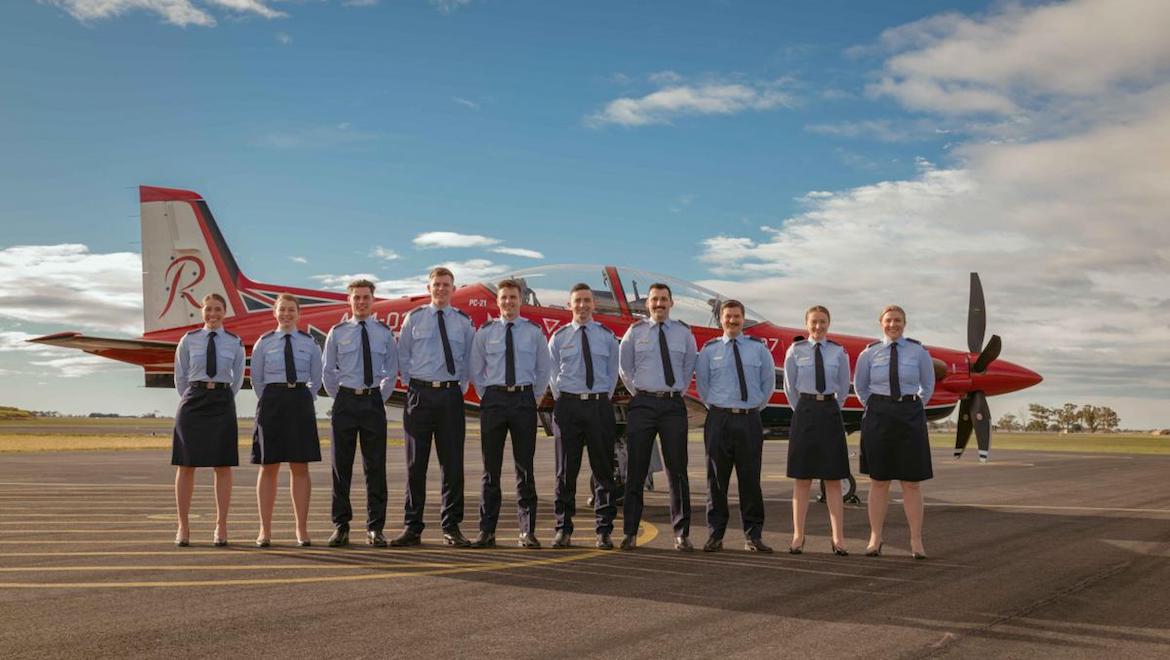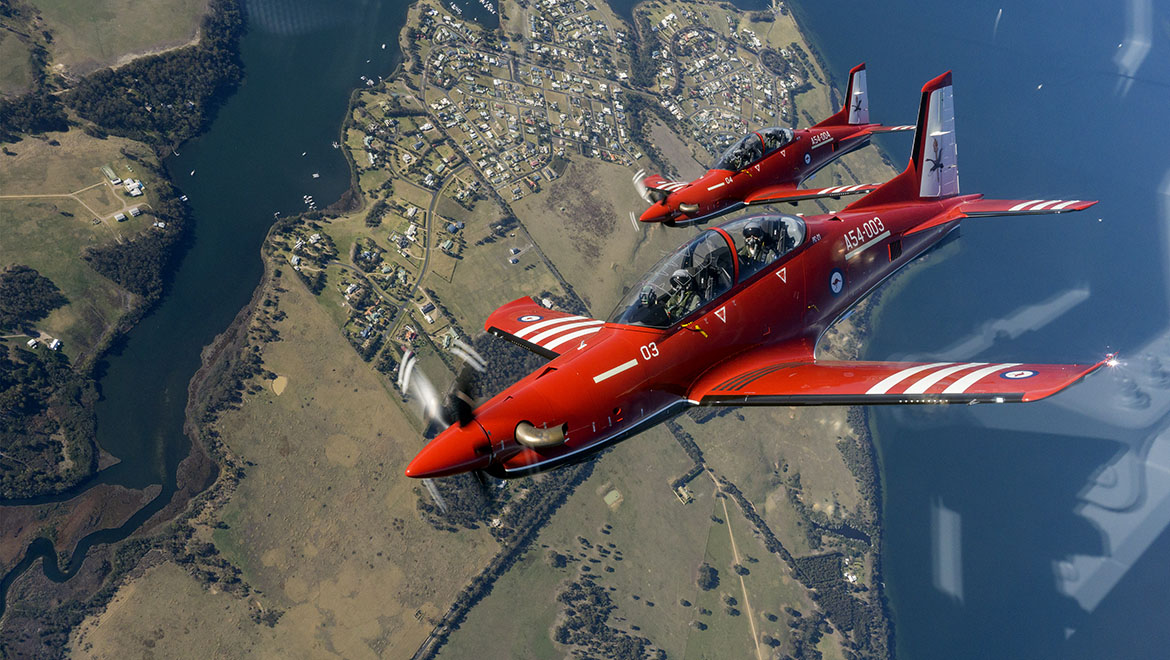
The first 10 students have made it through the first phase of the Royal Australian Air Force’s (RAAF) new pilot training course at the recommissioned No. 1 Flying Training School (1FTS) at RAAF Base East Sale.
In this first phase, which began on January 14, 2019, students underwent five months of pilot training, including approximately 250 hours of theory instruction, 30 hours of simulator instruction and 40 hours of flying in the PC-21 aircraft.
The students were congratulated by Wing Commander Chris Pouncey, Commanding Officer of 1FTS, who said the course was one of the most challenging ever offered by the RAAF.
“You are another step closer to becoming qualified pilots – men and women who play key roles in generating Australia’s air power for defence of our national interests,” Wing Commander Pouncey said in a statement.
The students’ next phase of pilot training will be at No.2 Flying Training School at RAAF Base Pearce in Western Australia.
The Pilatus PC-21, described by the RAAF as the world’s most advanced pilot training aircraft, was chosen in 2015 as the replacement for the PC-9/A.
The acquisition is part of the program designated Project AIR 5428 Pilot Training System, which also involves PC-21 flight simulation and an electronic learning environment.
Conversion training on the PC-21 began in August 2017 in Switzerland with pilots forming the transition team responsible for developing the new training curriculum.
Under the program, total planned acquisitions are for 42 PC-21 aircraft and seven simulators, plus three PC-21s for the Aircraft Research and Development Unit (ARDU) and a further four Forward Air Control variants for Number 4 Squadron.
When announcing in 2015 that RAAF Base East Sale would become the new home of basic pilot training, then Defence Minister Kevin Andrews said the facility would be allocated a fleet of 22 of the PC-21 trainers.

In keeping with the requirement to develop skills relevant to advanced military aircraft such as the F-35A Joint Strike Fighter and modern helicopters, the PC-21 comes with advanced features. These include a pressurised and air conditioned cockpit, an anti-G system and on-board oxygen generation.
With a sustained low-level speed of 320 knots and a top speed of 370 knots, the tandem two-seater can generate rates of roll of more than 200 degrees per second, providing a fighter-like experience and a key stepping stone to the real thing.
At the same time, the digital power management system and automatic yaw compensation give the PC-21 the ease of flying required by novices.












